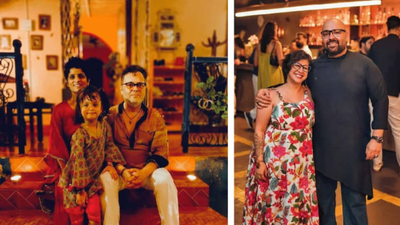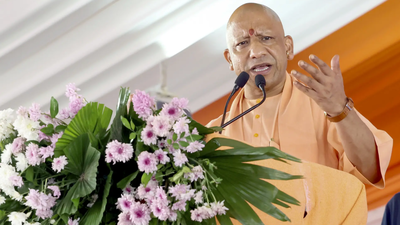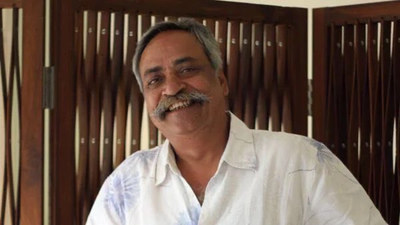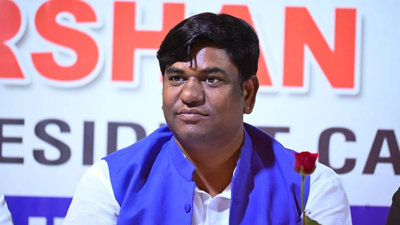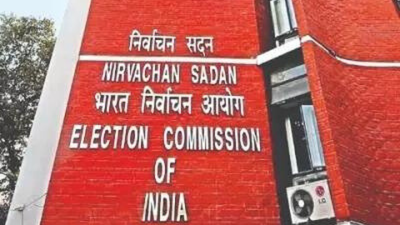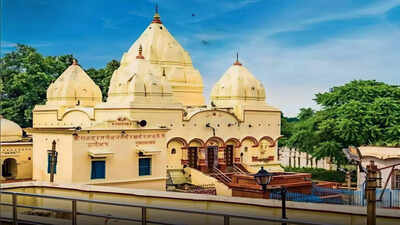Amid increasing pollution in metros, especially after Diwali, couples are finding fresh beginnings in Goa, where clean air and blue skies promise a healthier future for them and their childrenLast Oct, hotelier Ankit Gupta flew to Delhi from Panaji to celebrate Diwali with his parents in Maharani Bagh, an upscale residential area in South-East Delhi. Within hours, he developed a sinus infection. Ten days later, he remained on medication, struggling with respiratory problems.“Every friend of mine in Delhi is suffering from some form of respiratory illness,” Gupta said.Gupta, his wife Meenakshi Rajput (45) and 10-year-old daughter had moved to Goa in Jan 2024 after repeated bouts of respiratory problems left them scrambling for sanity, amid repeated visits to doctors’ chambers.Families that uprooted themselves from Delhi to settle in Goa — with great reluctance at first — are glad they made the shift.Delhi’s 24-hour average air quality index (AQI) on Diwali touched 345, in the ‘very poor’ category — the highest since 2021, when it had reached 382. Toxic smoke caused PM2.5 levels to soar to 675 micrograms per cubic metre at midnight, again the worst since 2021.PM2.5, or particulate matter with a diameter of 2.5 micrometres or less, are tiny airborne particles that pose significant health risks when inhaled. Because of how small they are, they can penetrate deep into the lungs and enter the bloodstream, leading to respiratory and cardiovascular problems, including asthma, coughing, breathing difficulties, and increased risk of conditions like lung cancer, heart disease, and stroke.Mumbai, too, saw a sharp rise, with AQI levels up 9% on Diwali, compared to the night before.“Our respiratory issues were getting worse,” said Gupta. “We had chronic bouts of respiratory illness after every Diwali. Given our health concerns, we had no choice but to move. My daughter developed an adenoid infection because of respiratory illness and we had to get them surgically removed. We were asked by our doctors to go to a cleaner area. Delhi is like a gas chamber.”For Prashant Kalra and his wife, their decision to relocate was driven by concern about their daughter’s health. He put up a post on Instagram recently, explaining why — as a responsible father and a husband — he took the seemingly “reckless” decision. His post soon went viral, with many joining in and sharing their own reasons for leaving Gurugram and Delhi.“We were on a road trip in 2018, around Diwali,” Kalra said. “We were headed to a boutique hotel in Rajasthan to escape the Diwali pollution. While on that trip, our very boutiquey hotel decided to have a Diwali firework display, which prompted a coughing bout from our daughter. At that point, we decided that the north was no longer going to be home, and that a relocation was unavoidable.”In 2019, the Kalras made the journey south, seeking refuge in Goa, where the air was free from toxic smog.“Young parents like us are looking for cleaner air for our kids,” Kalra explained. “The main challenges are giving up work, the social circle, the convenience of a big city, the fear of the unknown and similar issues. But increasingly, there are parents who just don’t have a choice as their kids are getting sicker each year.”Gupta and Kalra are part of a growing tribe of Indian parents fleeing the deadly air pollution that envelops the country’s metros. These ‘pollution refugees’ have found that Goa’s palm-tinged villages and sunny climes are kinder to their lungs.On Aug 6, 2022, four-year-old Damian (name changed) lay gasping for breath at Hiranandani Hospital in Powai, an upscale suburb in Central Mumbai. His fretful parents watched their son, his face dwarfed by the oxygen mask that was helping his lungs.Midnight visits to the emergency room had become routine for Damian’s parents. This was not the first time that they had seen doctors pump steroids and medicines into the wiry frame of their boy. But it would be the last, they decided.“We realised that this was the tipping point for us,” said Damian’s father, Lionel. “Our company was going remote and there was nothing keeping us in Mumbai any more.”Musician Stefan Kaye and his wife were in the same boat. Their move away from the national capital began with the search for suitable schools for their three-year old daughter.“It got to a stage where we were checking schools to see if they had air purifiers in every room and if the children were made to exercise outdoors or indoors. There were serious ramifications for her health and we were dissatisfied with the facilities that schools had to counter the effects of pollution,” Kaye said.The Kayes could feel their eyes stinging in Delhi because of the toxins in the air. “There used to be a yellow haze, and we always had a burning sensation at the back of our throat. This can take years of your life,” said Kaye, who now lives in Goa.According to the India State Level Disease Burden Initiative study published in The Lancet, one out of every eight deaths in India is attributable to air pollution. The study says that the average life expectancy in India would have been 1.7 years higher, had the air pollution level been less than the minimal level causing health loss.The ambient air quality in Delhi dances between hazardous and very severe. A deadly cocktail of construction dust, vehicular emissions and ash from crop burning chokes the national capital region, which fumes from firecrackers only exacerbates.“We moved to Goa because the health of our daughter was a real concern. As parents, we felt that it was irresponsible to raise a child and almost negligent in a way to live in Delhi,” Kaye said.
